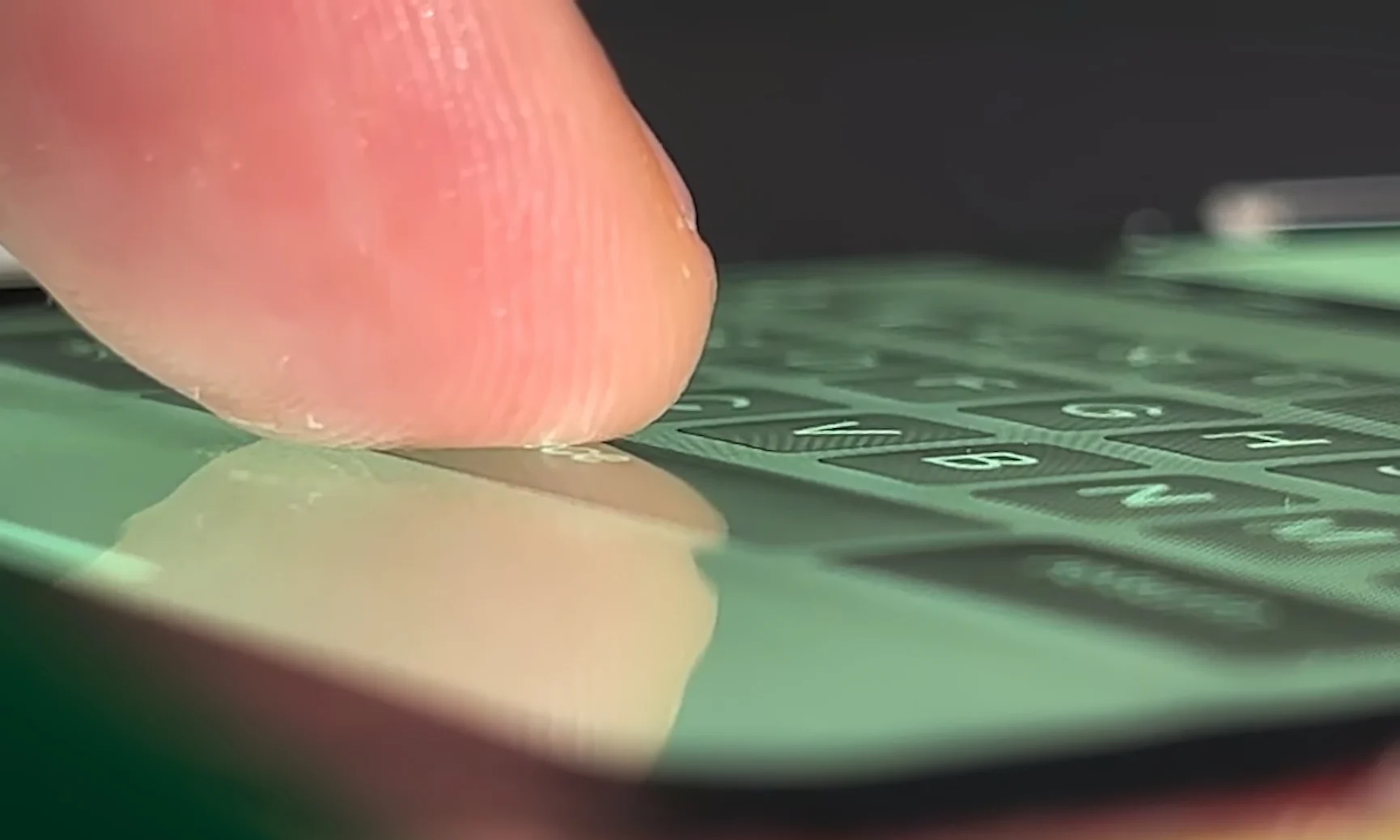Swiping and tapping on flat screens is something we’ve learned to deal with in smartphones, tablets and other touchscreen gizmos, but it doesn’t come close to the ease of typing on a hardware keyboard or playing a game with a physical controller. To that end, researchers Craig Shultz and Chris Harrison with the Future Interfaces Group (FIG) at Carnegie Mellon University have created a display that can protrude screen areas in different configurations. It’s a concept we’ve seen before, but this version is thinner, lighter and more versatile.
FIG’s “Flat Panel Haptics” tech can be stacked under an OLED panel to create the protrusions: imagine screen sections that can be inflated and deflated with fluid on demand. This could add a new tactile dimension for things like pop-up media controls, keyboards and virtual gamepads you can find without fumbling around on the screen. As Gizmodo notes, haptic feedback like Apple’s Taptic Engine produces natural-feeling vibrations but doesn’t help you find onscreen elements by touch alone. For activities like typing and playing games that require rapid-fire response time, a screen with pop-up elements could make things much less frustrating.
The Embedded Electroosmotic Pumps (EEOPs) are arrays of fluid pumps on a thin actuation layer built into a touchscreen device, like a smartphone or car display. When an onscreen element requires a pop-up button, fluid fills a section of the EEOP layer, and the OLED panel on top bends to take that shape. The result is a “button” that sticks out from the flat surface by as much as 1.5 mm, enough to feel the difference. When the software dismisses it, it recedes back into the flat display. The research team says filling each area takes about one second, and they feel solid to touch.

Future Interfaces Group at Carnegie Mellon
If the concept sounds familiar (and you’ve been following consumer tech long enough), this tech may remind you of Tactus’ rising touchscreen keyboard, which ultimately shipped as a bulky iPad mini case. FIG’s prototype can take on more dynamic shapes and sizes, and the research team says their version’s thinness sets it apart from similar attempts. “The main advantage of this approach is that the entire mechanical system exists in a compact and thin form factor,” FIG said in its narration for a demo video. “Our device stack-ups are under 5mm in thickness while still offering 5mm of displacement. Additionally, they are self-contained, powered only by a pair of electrical cables and control electronics. They’re also lightweight (under 40 grams for this device), and they are capable of enough force to withstand user interaction.”
The researchers see this as a tactile equivalent to the way pixels work on displays. “Much like LCD pixels, which modulate light from a common backlight, EEOPs draw from a common fluid reservoir and selectively modulate hydraulic pressure in and out of haptic cells.”
The pop-up buttons in their current form have a limited scope of shapes and sizes, reducing their versatility. But if they can eventually apply the same principle to a layer with more / smaller pop-up buttons (essentially “higher resolution” if we’re extending the “pixels” metaphor), it could open new doors for user interaction, including easier onscreen typing, gaming, in-car controls and even accessibility features like onscreen braille.
Credit: Source link


Comments are closed.